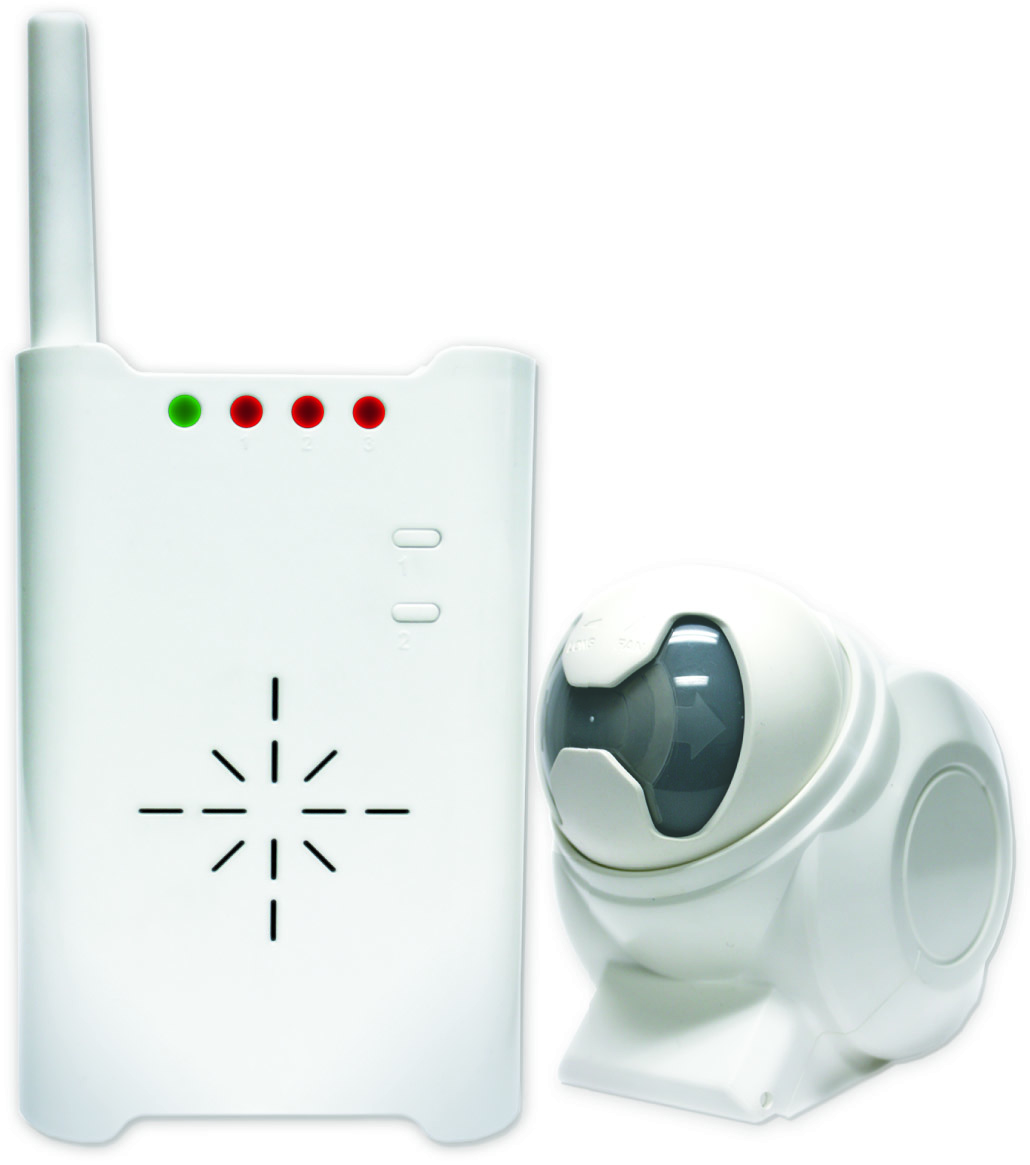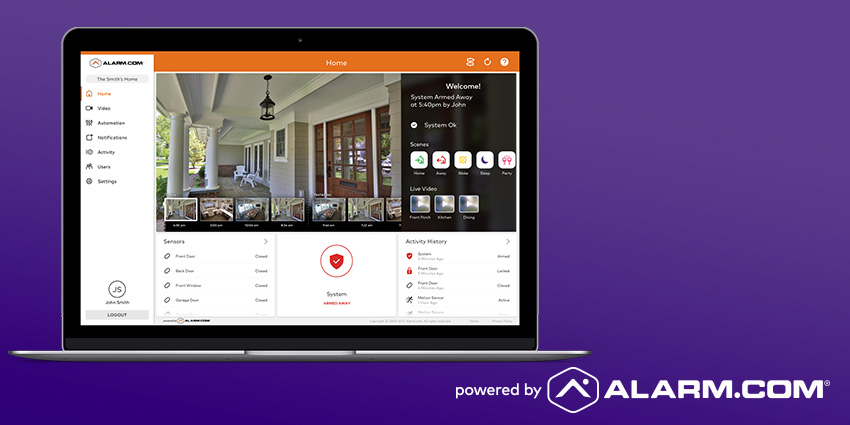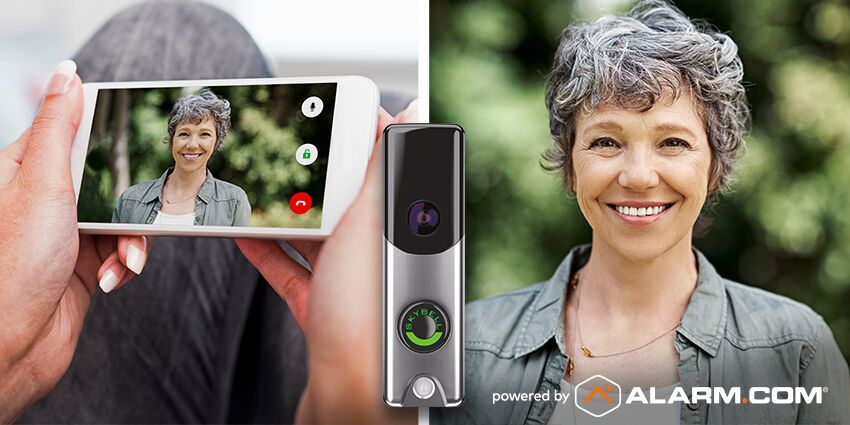When most people think of “home security,” they envision a burglar alarm or lock hardware. To many, home security simply means controlling who can enter a home, and when. However, many of our customers reach out to us with questions about securing the outside of their homes. At Northeast Security Solutions, we know that complete home security means more than interior home security. We always keep yard and driveway security in mind during our residential site surveys.
With this in mind, we have several best practices that we pass on to our customers every chance we get. These tips help prevent many issues from occurring before they arise. In the event of vandalism or burglary, we also want to give you the best shot at seeing what happened and when. This post is dedicated to passing along the steps that we most often take to improve our customers’ security outside their homes. We’ll begin by looking at a couple tips that customers can follow themselves without our help. From there, we’ll discuss measures that we help our customers take in improving yard and driveway security.

A driveway alert system, such as this model by Optex, provides an instant alert when a car or person comes up your driveway.
Install Hardware that Alerts You to Driveway Activity
Customers looking for exterior security often cite driveway security as their top concern. After all, many people park their cars in their driveway. Many potential burglars also approach a home using the driveway as well. Installing an automated driveway alert system can add security to this area. Most of the time, these systems have a motion detector that creates an audible alert upon activation. People that work at home and receive a lot of deliveries benefit from this type of system tremendously. However, anyone wishing to know when a car or person enters the driveway can install these systems. Simply install the battery-operated motion detector where you wish to detect motion. Find a central location in your home to plug in the speaker unit, and you’ll never again be caught surprised by a car in the driveway or someone at you door.
Eliminate “Hiding Spaces” Within Your Yard
Burglars often cite a homeowner’s yard maintenance and fence design as major factors when scoping out their next victim. Burglars naturally prefer yards that provide ample places to hide. We discussed the importance of smart landscaping in our post on Home Security for New Homeowners. Among the most important steps are trimming shrubs and bushes around the house, and planting thorn-bearing bushes to make navigation difficult for anyone wishing to use your plants as cover. If considering a fence, remember a chain-link fence still keeps pets in the yard and larger pests out, without sacrificing your security by completely hiding your yard. Finally, you can help eliminate these hiding places through additional security measures. Feel free to add security to vulnerable spaces within your yard by following our next security tip as well.
Use Exterior Cameras to Increase Yard and Driveway Security
In our post on Security System Add-Ons for Your Smart Home, we touched on adding cameras to keep an eye on your house. These cameras do a great job monitoring your home’s entry points and alerting you to motion. In the aforementioned post, we discussed using cameras to monitor your pets and children. In addition, a surveillance system adds a tremendous amount of yard and driveway security. Let’s look at a couple different types of cameras you can use to accomplish this goal.
Exterior Hardwired or Wireless Cameras

If your cameras are connected to an interactive cell dialer, as these Alarm.com cameras are, you can receive live video alerts as soon as your cameras detect motion.
We can accomplish exterior security through cameras using a couple different approaches. We install most of our cameras systems by running wires from a recorder to each camera location. These types of cameras record video at all times, and are generally a little more robust than their wireless counterparts. However, they generally tend to cost more as well. Between the purchase of a recorder and the increased stability and performance of the cameras themselves, a hardwired surveillance system can make for a significant investment. Of course, we also require the ability to get wire to each camera location. If you wish for a simpler camera solution, or if running wires proves difficult, you might consider wireless home surveillance.
Security systems with an interactive cellular dialer, such as our powered by Alarm.com, allow us to incorporate wireless cameras into your alarm. While you generally still need to plug these cameras into an outlet for power, you can skip the step of running wires to a central recording location. These cameras record and store motion-based clips. Alarm.com cameras also provide you some options that hardwired cameras do not. For example, you can receive live, motion-activated clips on your phone. Or perhaps you only want a motion-based alert if someone passes a camera during a specific timeframe. Adding wireless cameras to your security system provides you with these possibilities. The next type of camera we will discuss is also wireless, and watches over one very specific and important area of your home.

A doorbell camera, such as this one by Alarm.com, takes video of anyone who approaches your door and also allows you to interact with visitors using your cell phone.
Doorbell Cameras
Doorbell cameras add unique security and convenience to your home. Firstly, these cameras record motion-based clips even if your “visitor” does not ring the doorbell. This helps catch anyone wishing to grab a package from your doorstep. It also helps alert you to a potential burglar snooping around and surveying the scene. Additionally, many of these cameras, such as the Alarm.com model pictured, also send video alerts to your phone when someone rings the doorbell. If desired, you can talk to your guest through the doorbell’s speaker as well. If you have a smart lock, you can even unlock the door without getting up! The ability to help monitor home, as well as the added convenience factor, both help make doorbell cameras an extremely popular addition to our customers’ home security.
Install Contact Sensors on Gate and Fence Doors
We touched on adding contact sensors to gates and fences in our post on Unconventional Uses for Contact Sensors. In that instance, we provided the tip as a way to monitor pets. However, this concept can add security to your yard even if you do not have a pet. Certain gates and fences have their own unique safety concerns. Fences and gates that surround pools, for example, deserve special attention. However, any entrance to your yard makes a good landing spot for one of these sensors.
As mentioned earlier, thieves often see a wooden fence as an invitation. Installing sensors on fence doors can help you stop a burglar well before they get in your home. When used with our interactive cellular dialer, these sensors add even more security. Using our cell dialer’s customizable alerts, you can receive notification of someone opening your fence doors even if your security system is disarmed!
Putting it All Together
After reading this post, you should have some ideas for adding security to your home’s perimeter. You may already have a home security system in place and want to take some addition exterior security measures. Or perhaps you want to start from scratch while also considering yard and driveway security. Or maybe you wish to simply have us survey the outside of your home for potential concerns. Regardless of your current security situation in and around your home, do not hesitate to contact us. We will be happy to evaluate your home — both inside and out — and add security equipment as needed. Together we will create a complete home security plan to keep you, your loved ones, and your most valuable possessions safe.
Cover Photo Credit: U.S. Department of Agriculture on Flickr. Used under the https://creativecommons.org/licenses/by/2.0/ License.
